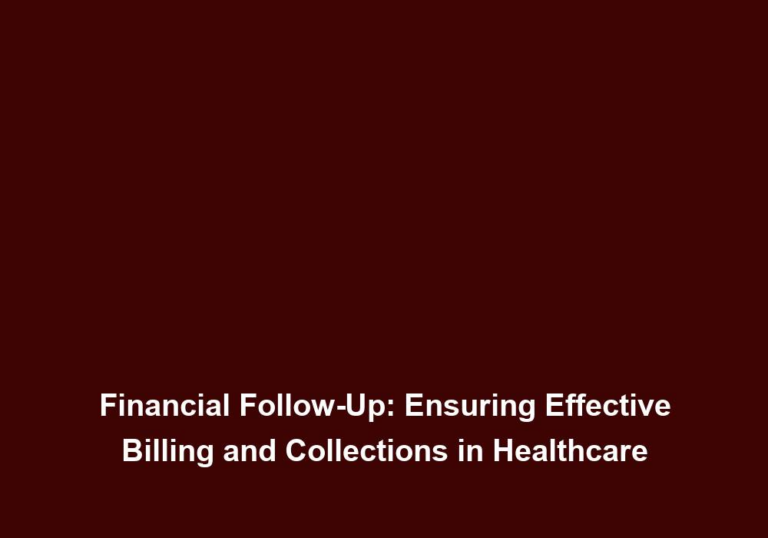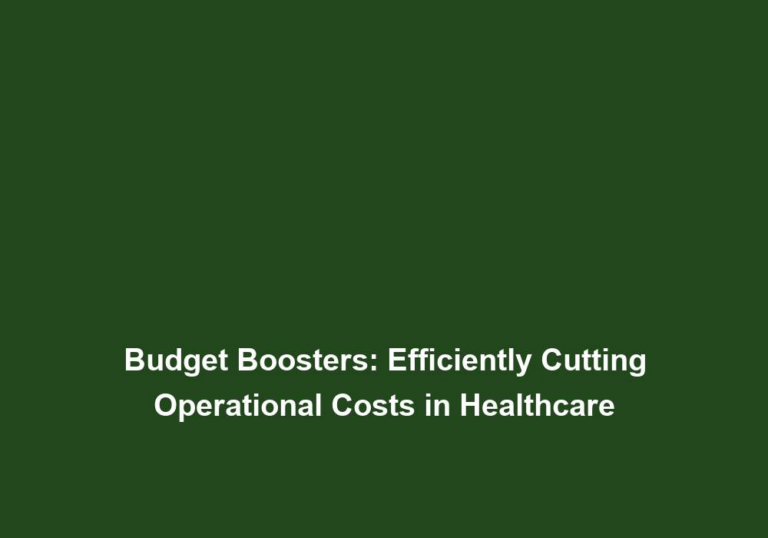Pinching Pennies: Proven Cost-Saving Strategies for Medical Practices
In today’s highly competitive healthcare industry, medical practices are constantly looking for ways to reduce costs while maintaining the quality of patient care. With rising expenses, declining reimbursements, and increasing regulatory demands, it is crucial for healthcare providers to implement effective cost-saving strategies. This article will delve into some proven strategies that can help medical practices save money and improve their financial stability.
Streamlining Administrative Processes
Medical practices can significantly reduce administrative costs by embracing technology and implementing electronic health records (EHR). EHRs streamline patient documentation, eliminate the need for physical storage space, and provide easy access to patient information. This not only reduces administrative errors but also improves efficiency. Additionally, EHRs can automate tasks such as appointment scheduling, prescription refills, and patient follow-ups, saving time and reducing human errors that can lead to costly consequences.
Outsourcing non-medical tasks is another effective strategy to reduce overhead costs. Medical practices can consider outsourcing services like billing and coding, appointment scheduling, and medical transcription. By leveraging specialized service providers, practices can save on hiring and training in-house staff while ensuring accuracy and efficiency in critical functions. This allows the practice to focus on core medical activities and reduce administrative burdens.
Cutting Supply Costs
Negotiating with suppliers is a proactive approach to obtain better pricing and discounts on medical supplies, pharmaceuticals, and equipment. Medical practices should actively engage in negotiations to consolidate purchasing power and gain access to volume discounts and special pricing arrangements. Joining group purchasing organizations (GPOs) is another effective way to achieve cost savings through collective bargaining.
When it comes to choosing drugs and medical supplies, considering generic options can significantly reduce costs. Generic drugs and supplies are often more cost-effective than their brand-name counterparts. It is essential to ensure that generic options meet quality and safety standards. Collaborating with pharmacists and suppliers can help identify suitable alternatives that are both cost-effective and of high quality.
Optimizing inventory management is crucial to avoid overstocking or wastage. Medical practices should maintain a thorough understanding of inventory needs and usage patterns. Implementing inventory management systems that track usage and expiration dates can help optimize supply levels, reduce carrying costs, and prevent unnecessary purchases. Regularly reviewing inventory and adjusting orders accordingly can lead to significant cost savings.
Enhancing Operational Efficiency
Maximizing staff productivity is essential for reducing costs and improving overall efficiency. Regularly assessing staffing needs and adjusting workforce levels accordingly can help avoid overstaffing or understaffing. Effective scheduling, cross-training, and standardized protocols can optimize staff utilization, reduce overtime expenses, and improve productivity. By ensuring that the right staff is available at the right time, medical practices can provide quality care while minimizing costs.
Implementing appointment reminder systems can help prevent no-shows and late cancellations. Automated calls, text messages, or email notifications can remind patients of their appointments, ensuring that time slots are utilized efficiently. This reduces revenue losses resulting from unfilled appointments and maximizes the utilization of healthcare professionals’ time.
Optimizing revenue cycle management (RCM) processes is crucial for efficient billing, coding, and claims submission. Medical practices should implement robust RCM processes that ensure accurate and timely reimbursement. Regularly reviewing coding practices, conducting audits, and providing staff training can help minimize revenue leakage and improve cash flow. By maximizing revenue collection and reducing billing errors, practices can improve their financial stability.
Exploring Alternative Payment Models
Participating in value-based care initiatives can help medical practices achieve better financial outcomes while improving patient outcomes. Initiatives such as accountable care organizations (ACOs) or bundled payment programs incentivize healthcare providers to deliver high-quality care at reduced costs. By focusing on value rather than volume, practices can reduce unnecessary expenses and improve patient care outcomes.
Negotiating favorable contracts with insurance payers is another effective strategy to ensure appropriate reimbursement rates and contract terms. Analyzing fee schedules, identifying opportunities for negotiation, and considering partnerships with other practices can increase bargaining power. Through strategic negotiations, medical practices can secure better payment terms and reduce financial strain.
Embracing telemedicine is a cost-effective way to provide care to patients remotely. Telemedicine eliminates the need for physical office visits, reducing overhead costs associated with maintaining a physical facility. It also expands patient access to care, particularly in underserved areas. By embracing telemedicine, medical practices can provide quality care while reducing costs and increasing patient satisfaction.
In conclusion, medical practices can effectively reduce costs by streamlining administrative processes, cutting supply expenses, enhancing operational efficiency, and exploring alternative payment models. By implementing these proven strategies, practices can achieve long-term financial stability, improve patient care, and stay ahead in today’s competitive healthcare landscape.






